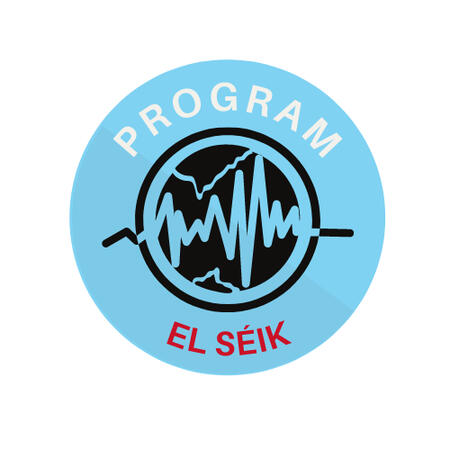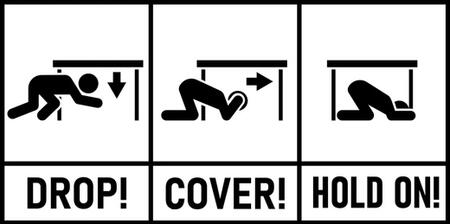El Séik: Philippine Institute of Volcanology and Seismology

Official Website Presentation of El Séik by PHIVOLCS
The main purpose of this website is to inform the public, specifically students, about earthquakes and how to keep safe during and after one.
PRESENTATION BY EL Séik
EARTHQUAKE MONITORING
The Institute's National Earthquake Monitoring and Information aims to provide accurate and timely information on significant earthquakes and tsunami events that may significantlly impact the Philippines; and to ensure the accessibility and integrity of earthquake data.

Earthquake monitoring in the country has been enhanced with the operation of ninety two (92) Seismic Network, ten (10) Seismic Stations of which were commissioned in 2016. With 64 stations in 2010, PHIVOLCS-DOST surpassed its target of establishing an 85-station network by end of 2016.
Information and picture directly taken from PHIVOLCS Official Website
STAY SAFE DURING AN EARTHQUAKE
DROP. COVER. HOLD.

DROP onto your hands and knees before the earthquake hits you. This position protects you from falls, but allows you to move when you need to.
COVER your head and neck, preferably your entire body, under a sturdy table or desk. If there's no shelter nearby, get out near the inner wall or next to low furniture that won't fall, and cover your head and neck with your arms and hands.
HOLD onto your shelter or head and neck, until the shaking halts. If shaking causes the shelter to move, be prepared to move with the shelter
Stay inside if you're inside
DO NOT run outside or to other rooms during an earthquake. You are less likely to be injured if you stay where you are.
If possible, within the few seconds before shaking intensifies, quickly move away from glass, hanging objects, bookcases, china cabinets, or other large furniture that could fall.
If you are able to, pick up objects and protect your head and face from falling shards and broken glass.
Stay OUTSIDE if you're OUTSIDE
Stay away from buildings, power lines, sinkholes, and fuel and gas lines. The greatest danger from falling debris is just outside doors and at the exterior walls of buildings.
Go to an open area away from trees, telephone poles and buildings. If you are outside, go deep and stay there until the shaking stops.
STAY SAFE AFTER AN EARTHQUAKE
Hotlines
National Emergency Hotline in the Philippines : 911
Philippine National Police Hotline: 117 or (02) 8722-0650
Philippine Red Cross: 143 or (02) 8527-8385 to 95
Bureau of Fire Protection: (02) 8426-0219 or (02) 8426-3812
Protect and hold
Expect aftershocks to follow the main shock of an earthquake. Be ready to Drop, Cover, and Hold On if you feel an aftershock.
If you are trapped, send a text or bang on a pipe or wall. Cover your mouth with your shirt for protection and instead of shouting, use a whistle.
Check yourself to see if you are hurt and help others if you have training.
For emergency information and instructions via radio, television, social media or text alerts on cell phones, check local news bulletins.
Use text messages to communicate, which may be more reliable than phone calls.
Do not enter damaged buildings. Earthquakes can destroy buildings and make them dangerous. Wait until local authorities say it is safe to enter your home.
In the event of a power outage, use flashlights instead of candles. If candles must be used, keep them away from anything that could catch fire. Always stay near burning candles.